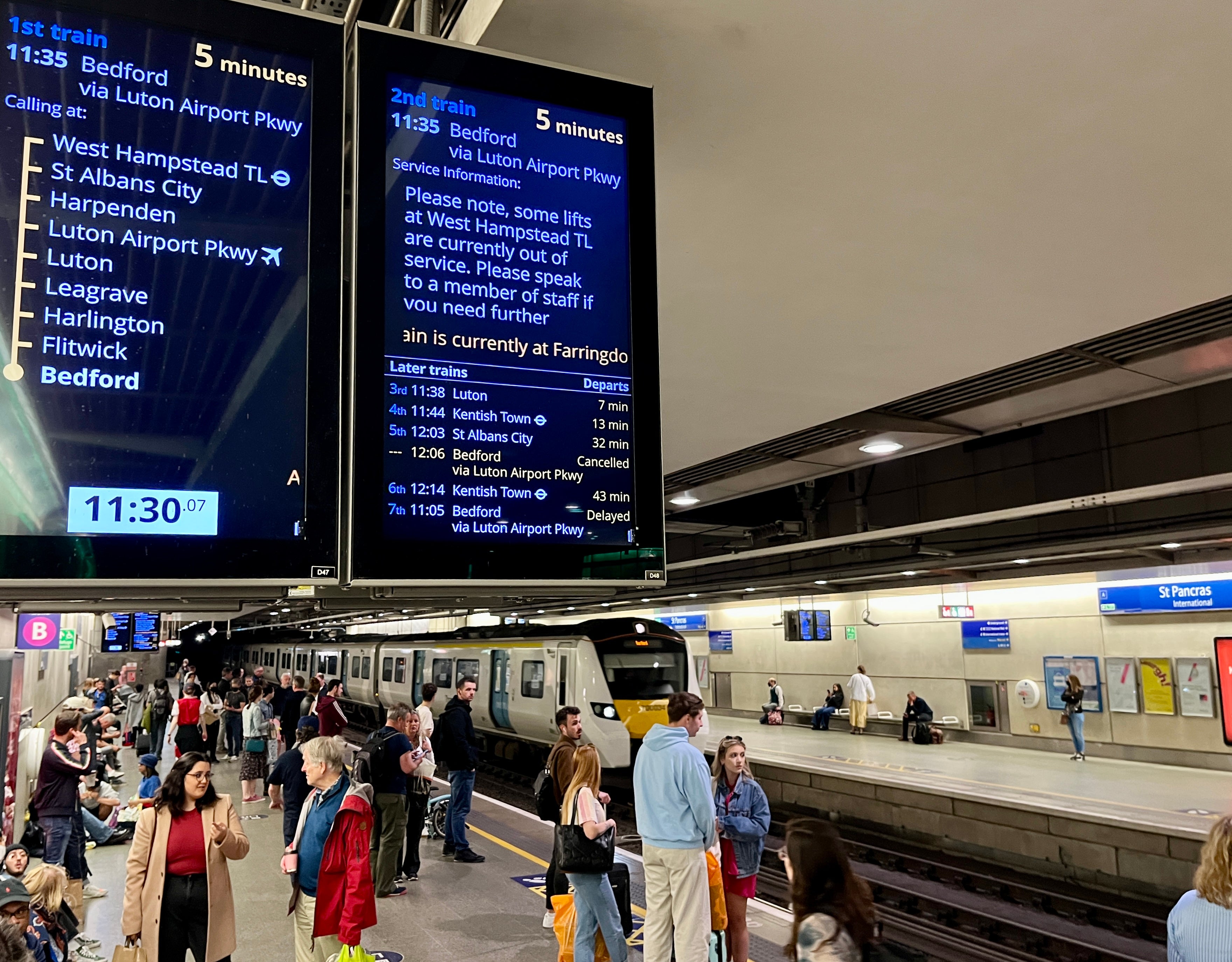The busiest trains routes to avoid in England and Wales
Bedford via Luton to London St Pancras, Gatwick and Brighton is a route that appears three times in the table

Your support helps us to tell the story
From reproductive rights to climate change to Big Tech, The Independent is on the ground when the story is developing. Whether it's investigating the financials of Elon Musk's pro-Trump PAC or producing our latest documentary, 'The A Word', which shines a light on the American women fighting for reproductive rights, we know how important it is to parse out the facts from the messaging.
At such a critical moment in US history, we need reporters on the ground. Your donation allows us to keep sending journalists to speak to both sides of the story.
The Independent is trusted by Americans across the entire political spectrum. And unlike many other quality news outlets, we choose not to lock Americans out of our reporting and analysis with paywalls. We believe quality journalism should be available to everyone, paid for by those who can afford it.
Your support makes all the difference.One rush-hour train through London carries more than twice as many passengers as seats available, new government figures reveal.
The Department for Transport (DfT) has published a list of the 10 busiest trains in England and Wales in autumn 2023. All but one are London commuter services, the exception serving Cardiff Central. Topping the list was the 7.33am from Bedford via Luton airport, London and Gatwick airport to Three Bridges in Sussex.
Approaching London St Pancras International, the train had more passengers standing than seated, with a “maximum load factor” of 204 per cent. The Independent calculates that 537 passengers were obliged to stand.
A Thameslink spokesperson said: “This survey measures crowding by counting the number of people standing compared to the number of seats available.
“But these Thameslink trains can’t be compared with other UK trains because they were built as people-movers with fewer seats and lots of standing space. This allows more passengers to board services and travel in comfort on this busy commuter route.
“We constantly monitor how busy our services are and proactively take action to increase capacity on our routes. Since this survey was carried out a year ago, we gave passengers more space by lengthening the 7.33am from eight to 12 carriages and added another train at 7.15am to create even more capacity. This December we’ll also be lengthening the 7.03am service by 50 per cent.”
Second on the list: Chiltern Railways’ 7.46am departure from Prince’s Risborough in Buckinghamshire, which on the final leg of the journey had almost two-thirds more passengers (65 per cent) than seats available.
The train operator says it has introduced additional peak services in Buckinghamshire to help reduce crowding on midweek services and is seeking DfT approval “to bring additional carriages into service over the next 12 months”.
Wales takes third place with an afternoon train that begins at Gloucester in England but which is at its busiest between Cardiff and Bridgend. The Transport for Wales (TfW) 2.57pm from Gloucester to Maesteg has 62 per cent more passengers than seats after it leaves the Welsh capital. TfW says it is making timetable changes in December that it is “confident will spread out demand across several services”.
Early boarders of the 6.10am from Portsmouth Harbour to London Waterloo can be confident of a seat. But after passing through Guildford and Woking, this South Western Railway service carries 57 per cent more passengers than there are seats, making it the fourth-busiest train. A stop at Vauxhall relieves some of the pressure before the final three minutes to Waterloo.
The rail firm plans to increase this train to 12 coaches, the maximum possible length, in December 2024, adding a further 126 standard seats.
London Euston is the departure point for the fifth-most crowded train, in the shape of the 5.46pm to Crewe. This is run by London Northwestern Railway and is mainly a commuter service – with 55 per cent more passengers than seats until it reaches its first stopping point, Milton Keynes Central.
The train operator, part of West Midlands Trains, says timetable capacity enhancements are currently planned for introduction across the network.
In the lower half of the top 10, the Bedford to Three Bridges route makes two further appearances: with the 7.03am southbound train in sixth place and the 7.30am departure at 10th.
From London Waterloo, the 6.30pm homebound commuter train to Woking, Guildford and Portsmouth Harbour takes seventh place.
Waterloo is the destination for the eighth-busiest train, the 7.14am South Western Railway service from Alton.
Stourbridge Junction in Worcestershire is the departure point for the ninth busiest, the Chiltern Railways 6.14am to London Marylebone. The train passes through Birmingham, Warwick and Banbury but only after Haddenham & Thame Parkway station does it carry 51 per cent more passengers than seats.
Other figures revealed by the government show the parlous state of the railway since the collapse in commuting revenue following the Covid pandemic.
Seven out of 10 seats are empty on the average midweek train service, and across the morning and evening rush hours, the average “load factor” is only 53 per cent – signifying trains that are barely half-full at peak times.
Simon Calder’s travel podcast for The Independent on this issue
Join our commenting forum
Join thought-provoking conversations, follow other Independent readers and see their replies
Comments